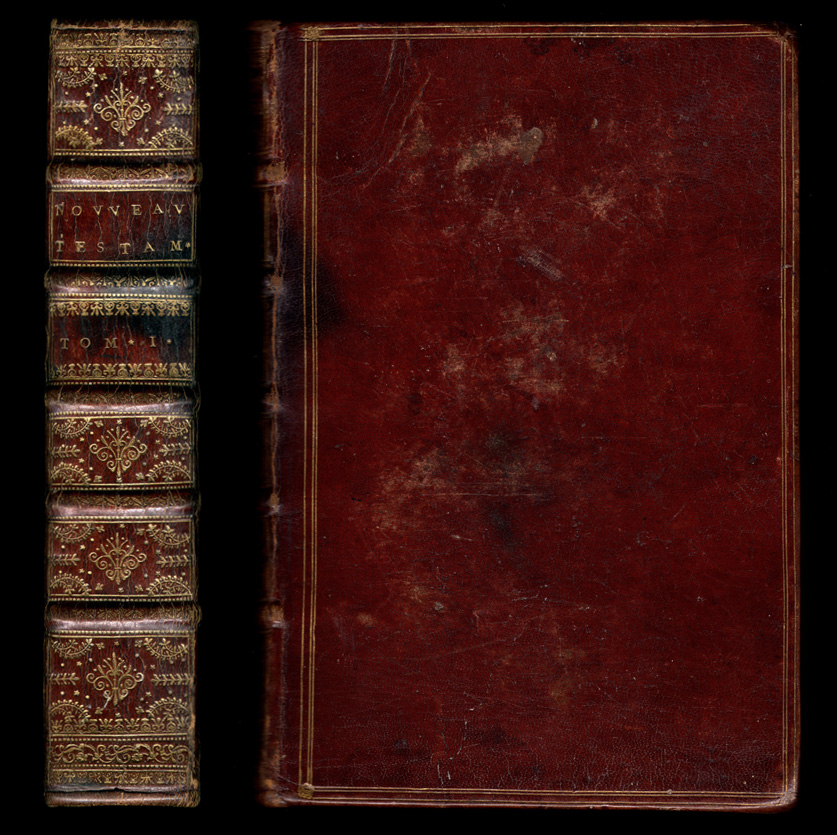

| When I spotted this binding on eBay I was determined to try to win it as it looked to be most certainly a "Boyet". As we don't really know whether or not Luc-Antoine Boyet carried out the gold tooling on his bindings, and there appears to be considerable amount of doubt on the subject, one must be careful in describing a binding that can be attributed to Boyet. In as much as the same tools appear on these bindings for decades, we can at least assume that if Boyet did not apply the gold tooling he employed for many years the same guilder (doreur) who used the same unique set of tools. On this page then, if we speak of the tools of Boyet, the reader should be aware that these may in fact be the tools of craftsmen employed by Boyet, or perhaps be more simply, the tools of the atelier of Luc-Antoine Boyet. There are a number of other important points that I should just briefly state here while we are studying these bindings by Boyet. Most experts seem to agree on the excellent quality of the bindings, very well made from the best materials. This fact is perhaps one of the reasons why there are today still quite a few of these 300 year old artifacts to be found even occasionally on eBay! The binding shown above is probably the sort of binding that Boyet made more often than not, and one that would perhaps escape the notice of even the general bookseller as many bindings from this period look quite similar. However once you recognize the Boyet tools you can spot these bindings even in a low resolution eBay photo. We are now going to have a closer look at the tool imprints on this binding. |
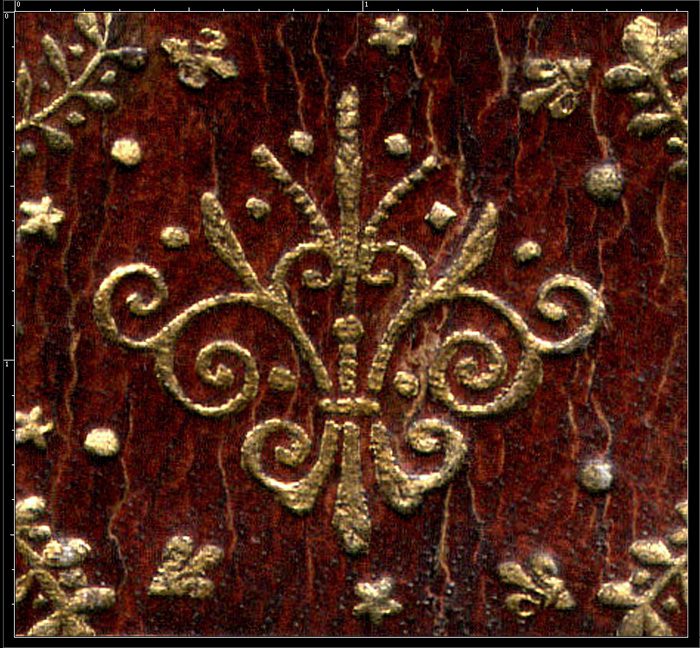
| On page 110 of their 2002 Paris publication entitled: Reliures françaises du XVIIe siècle : Chefs-d'oeuvre du musée Condé, Isabelle de Conihout & Pascal Ract-Madoux, have illustrated, under a title of "Fers du doreur de Boyet", a selection of rubbings of the more common tool imprints from bindings which they attribute to Luc-Antoine Boyet. In this limited presentation we find; 6 palettes (I - VI), 5 roulettes (A - E,; 6 large fleurons (1 - 6), and two tools (a, b) used in the construction of fans or wheels. Their rubbing of the fleuron #4 corresponds with the central fleuron on our spine compartments, as shown in the Comparative Diagram below, as well as the enlarged example above. |
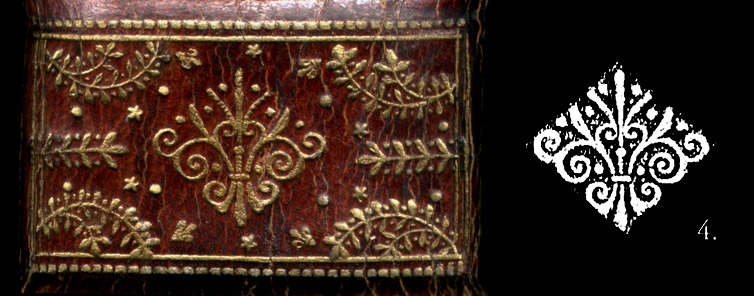
| Part of my interest in buying this binding is being able then, to make high resolution scans of the tooling. Nothing is more valuable when trying to identify a binding than having good quality scans of comparative imprints. In this regard the palette at the tail end of the spine (shown below) is an excellent example. |
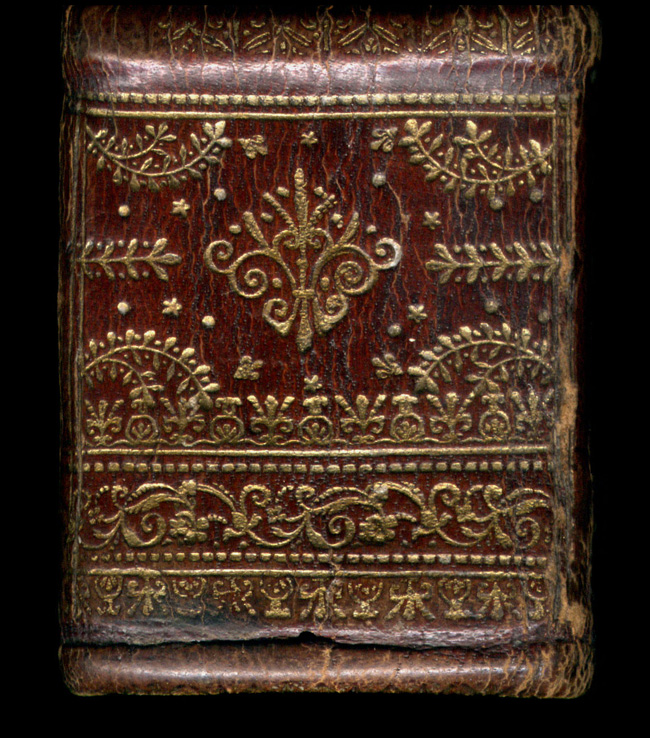
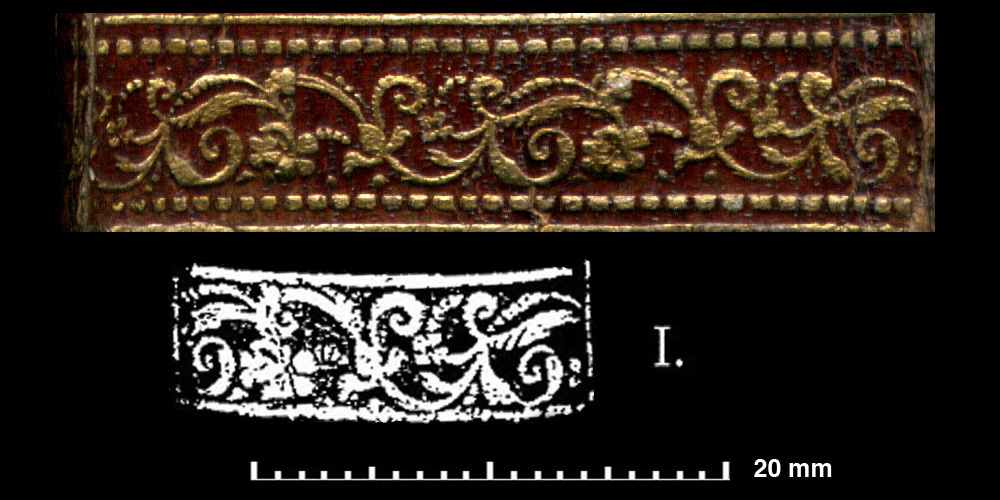
| In Comparative Diagram 2, I have reproduced the rubbing in the orientation as it is shown on page 110, this corresponds with our 1693 example. However this same palette when placed at the head of the spine (see the 1700 example) appears to be rotated 180 degrees. Click on this diagram to see a 1200dpi enlargement, here you can see all the fine details which will make identification of this imprint a simple matter. Below I have reproduced the same tail section of the spine at closer to actual size, depending on your screen resolution you see this detail somewhat larger than it actually is. Even though this is a photo taken in good light, the detail of the palette that is shown above is not visible to the naked eye. |
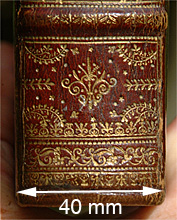
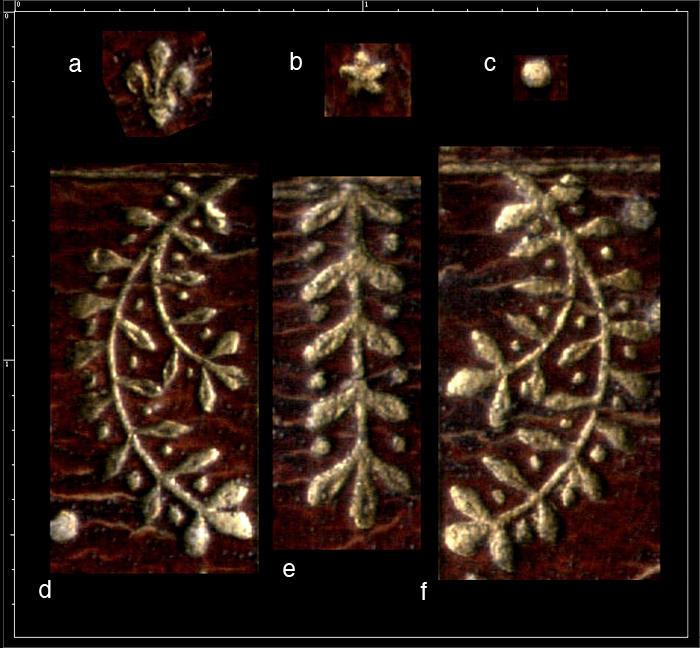
| The enlarged imprints shown above are invaluable as you find that this set branches served to decorate many spine compartments and is perhaps the most common of all the imprints found on Boyet bindings most often in spine compartments but also used in certain centrepiece arrangements such as the example shown below from Isabelle de Conihout & Pascal Ract-Madoux groupe 3 1696-1700 example of a stunning retrospective Boyet binding (page77.) |
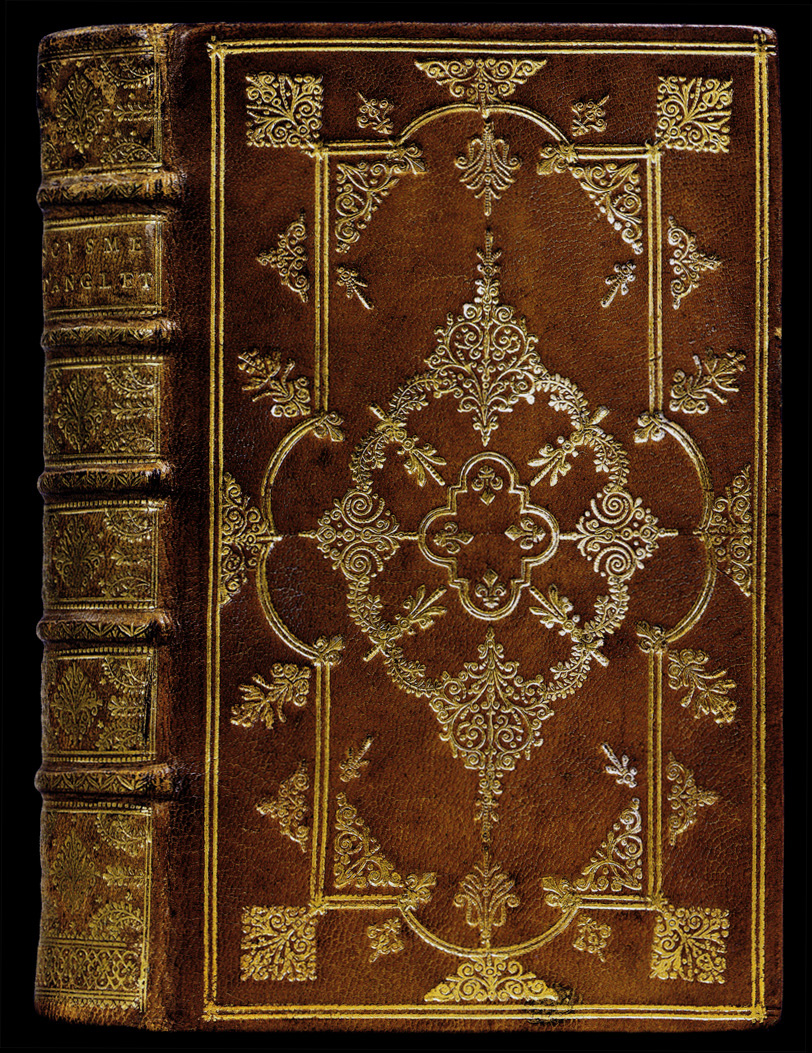
| We can observe that the leather of the binding shown above (example #30) is of a courser grain than our 1693 example and the tooling appears to be of a much heavier application. A comparative study of these imprints is not a simple matter, here the imprints are deeper and the gold more abundant. However a small detail in one of the branches, that we might call a defect (as we do not see this unexpected variation in the opposite twin branch of the pair), allows us to be almost certain that the branch imprints found here are from the same tool as those of our 1693 binding. |
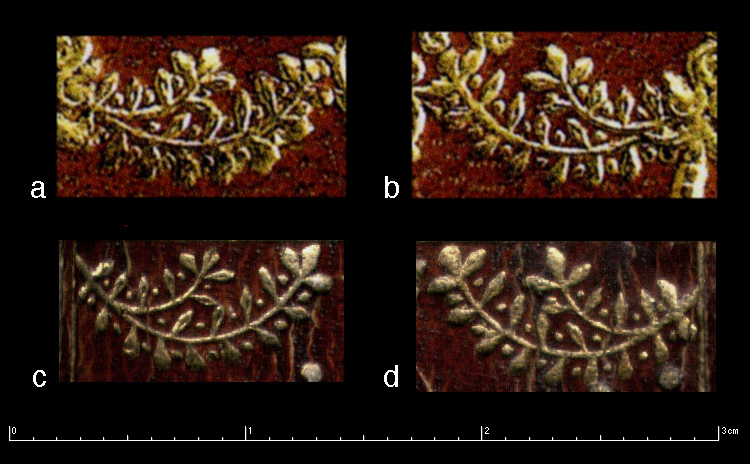
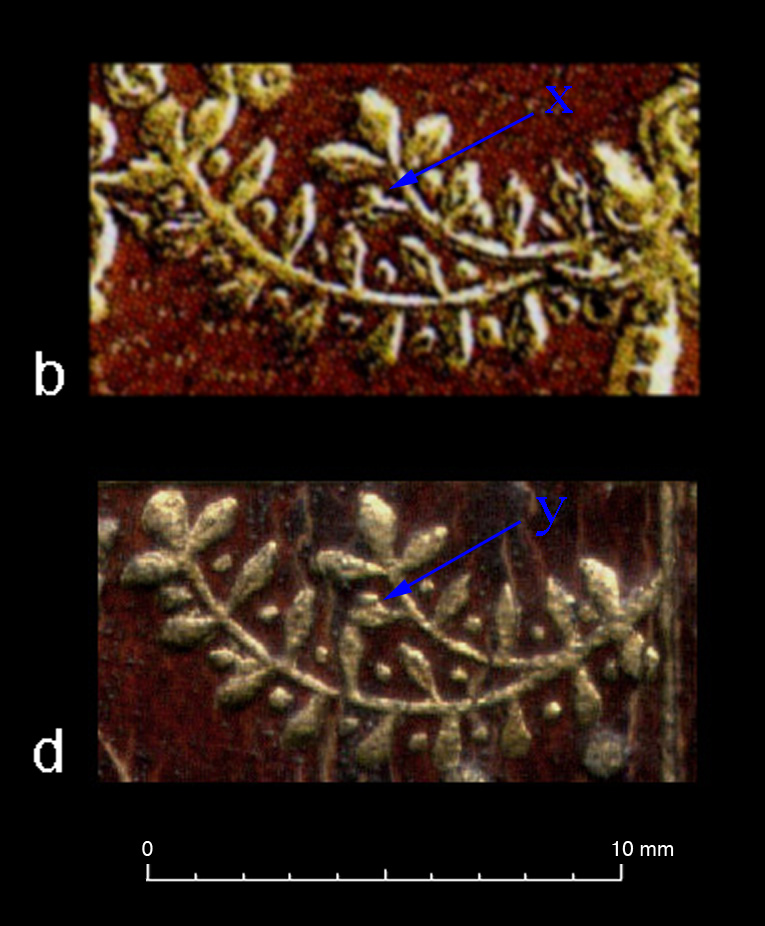
| In the 1200dpi enlargement of Comparative Diagram 4, we can see that this difference in detail is due to the fact that the dot that usually appears between each leaf, has been placed too close to the leaf, and appears as part of the leaf or as though the end of the leaf is split. Thus, it is not properly a defect, but is anyway a detail that can easily be detected, and one that is not likely to have been copied. If you find one of these branches on a binding and it has this split leaf detail you probably are looking at a Boyet. |
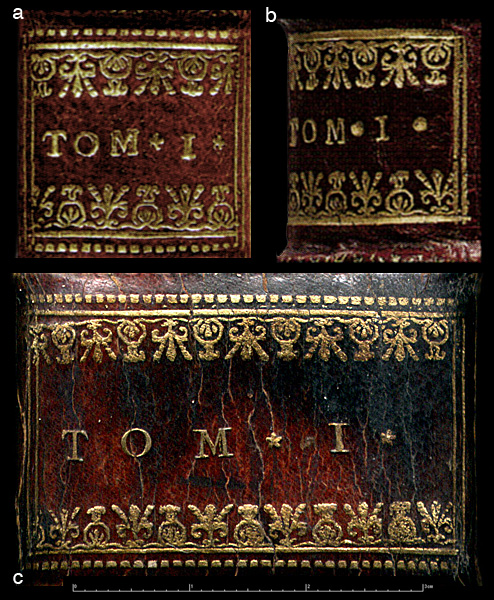
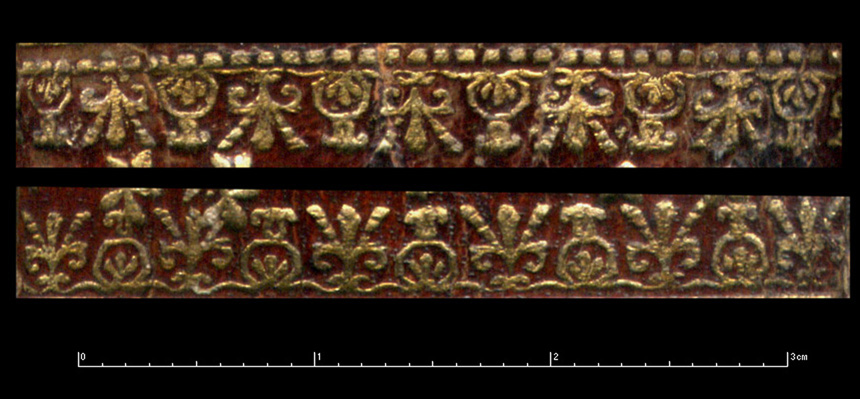
| Probably the most distinctive trademark of a Boyet is the volume (TOM) label, decorated with an often copied palette that is not included in the Boyet tool chart of Isabelle de Conihout & Pascal Ract-Madoux, who provide only 6 examples (I - VI). We can provisionally call this example, palette VII, perhaps Boyet's lucky palette as it shows up on more bindings than any other, even though the tooling of the other spine panels often changed, this label did not. |
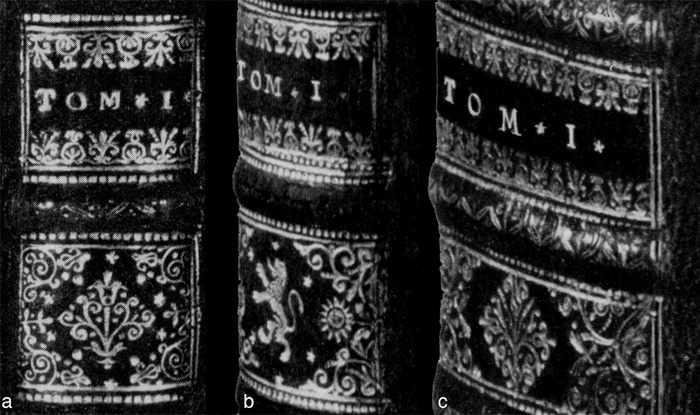
|
See the next page Luc-Antoine Boyet- decorative endpapers Return to the previous page. Dentelle by Luc-Antoine Boyet |
| Go to Digital Alchemy | return to the home page of cyclopaedia.org |